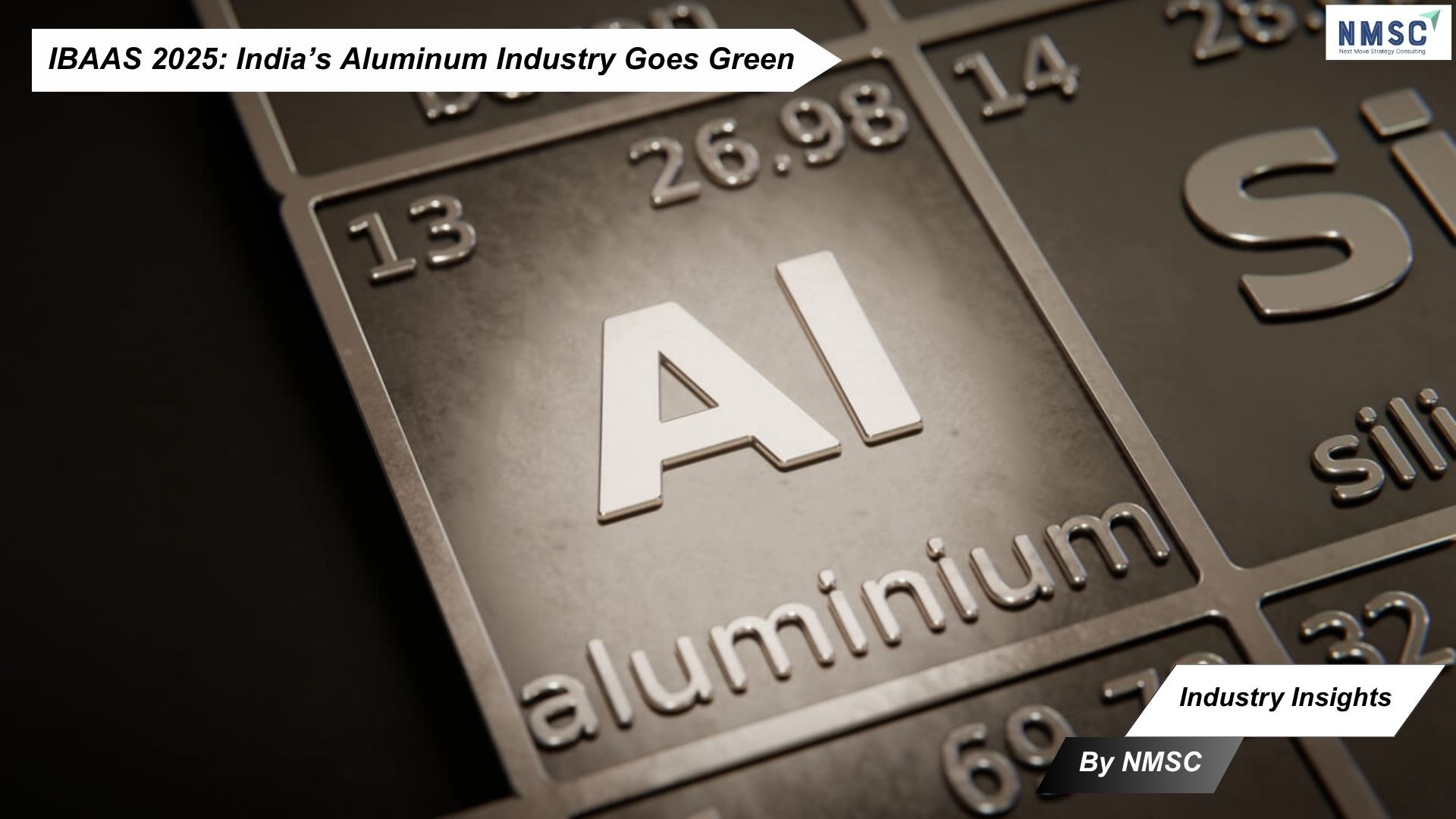The Aluminum Market is Expected to Reach USD 340.12 billion by 2030
Published: 2025-10-07
The Rise in Demand for Electric Vehicles along with Growth in Construction Sector is Driving The Aluminum Market Growth.
According to the Next Move Strategy Consulting, the global Aluminum Market size was valued at USD 244.34 billion in 2024 and is projected to grow to USD 264.07 billion by 2025. Additionally, the industry is expected to continue its growth trajectory, reaching USD 340.12 billion by 2030, with a CAGR of 5.1% from 2025 to 2030.
In terms of volume the market size was 104.4 million metric tons in 2024 and is projected to grow to USD 112.3 million metric tons by 2025. Additionally, the industry is projected to reach 138.6 million metric tons in 2030, with a CAGR of 4.3% from 2025 to 2030.
The rising demand for electric vehicles (EVs) is significantly contributing to the growth of the aluminum industry. Aluminum’s lightweight, corrosion-resistant, and durable properties are essential for enhancing vehicle efficiency, which is a critical factor for EVs.
Aluminum helps reduce the weight of vehicles, improving acceleration and energy efficiency. This is particularly important for electric cars as they need to maximize range and performance.
According to the International Energy Agency’s Global Energy Review 2025, global electric car sales surged by over 25% in 2024, reaching more than 17 million units, and EVs now account for one in five cars sold worldwide. This increase in EV adoption is directly contributing to the rising demand for aluminum, especially in the production of key components such as battery casings, frames, and body panels, which is propelling the market share.
In addition, the growing construction industry is also driving the demand for aluminum. The material is highly valued in construction due to its versatility, strength, and lightweight nature, which makes it ideal for a variety of building applications.
Aluminum is commonly used in windows, doors, roofing, and structural frameworks, offering excellent corrosion resistance and contributing to energy efficiency in buildings. According to the latest report from NMSC, the global construction sector was valued at USD 11.39 trillion in 2024 and is expected to reach USD 16.11 trillion by 2030, growing at a compound annual growth rate (CAGR) of 5.5%.
As construction activities expand, particularly in emerging economies, the demand for sustainable and durable materials like aluminum continues to rise. Builders are increasingly seeking eco-friendly and long-lasting solutions for modern infrastructure, further propelling the aluminum market demand.
However, the aluminum market faces challenges due to environmental and regulatory constraints. Stringent emission controls and recycling requirements, such as those set by the EU Emissions Trading System and the Clean Air Act, are increasing the cost of aluminum production.
The restrictions on greenhouse gas emissions, in particular, have led to higher production costs for manufacturers, limiting the market’s expansion. The enforcement of these regulations also results in higher operational costs and a greater regulatory compliance burden for aluminum producers.
On the other hand, there are promising opportunities for growth in the aluminum market trends through the development of low-carbon aluminum production technologies. Innovations such as inert anode technology, which eliminates greenhouse gas emissions during the smelting process, are poised to significantly reduce the environmental impact of aluminum production.
In February 2024, Alcoa partnered with Nexans to supply low-carbon aluminum produced through the ELYSIS technology, which is a groundbreaking approach that produces aluminum with no carbon dioxide emissions, releasing only oxygen.
As the demand for sustainable materials continues to rise, such technological advancements offer substantial growth potential for the market, aligning with global sustainability goals and helping the industry overcome environmental and regulatory challenges.
Request for a FREE Sample on Aluminum Market
According to the report, the top players operating in the aluminum industry include Aluminum Corporation of China Limited (CHALCO), China Hongqiao Group Limited, Hindalco Industries Ltd., Norsk Hydro ASA, Rio Tinto, Alcoa Corporation, United Company RUSAL PLC, East Hope Group Company Limited, Emirates Global Aluminum PJSC, Xinfa Group Co., Ltd. among others.
These market players are adopting strategies, including partnerships and product launches across various countries and regions to maintain their dominance in the market.
The aluminum industry is witnessing strong growth as leading companies implement innovative technologies and sustainable practices to improve efficiency, reduce environmental impact, and meet the increasing demand across various sectors.
In February 2024, Alcoa partnered with Nexans to supply low-carbon aluminum through ELYSIS technology, which eliminates greenhouse gas emissions during production, catering to industries like automotive and packaging.
Similarly, in January 2025, Vedanta Aluminum reported a 28.5% reduction in its greenhouse gas emissions intensity from FY 2011-12 to FY 2023-24, contributing to India’s 2070 net-zero target with sustainable practices.
Additionally, strategic collaborations and capacity expansions are further driving aluminum market growth. In February 2025, Hindalco Industries delivered 10,000 aluminum battery enclosures to Mahindra from its new advanced facility in Chakan, India, supporting the electric vehicle sector’s need for lightweight, durable materials.
Moreover, Vedanta Aluminum opened VeDakshata, a skills training center in Odisha, on December 31, 2024, aiming to train 700 youth over three years, fostering community development while enhancing its operational growth.
Despite challenges such as fluctuating raw material prices and strict environmental regulations, the growing adoption of sustainable technologies and the rising demand for aluminum in sectors like electric vehicles, construction, and packaging continue to propel the market toward sustained growth.
Key Insights from the Aluminum Market Report:
-
The information related to key drivers, restraints, and opportunities and their impact on the aluminum market is provided in the report.
-
The value chain analysis in the market study provides a clear picture of the roles of each stakeholder.
-
The market share of the players in the aluminum market, along with their competitive analysis, is provided in the report.
















Add Comment